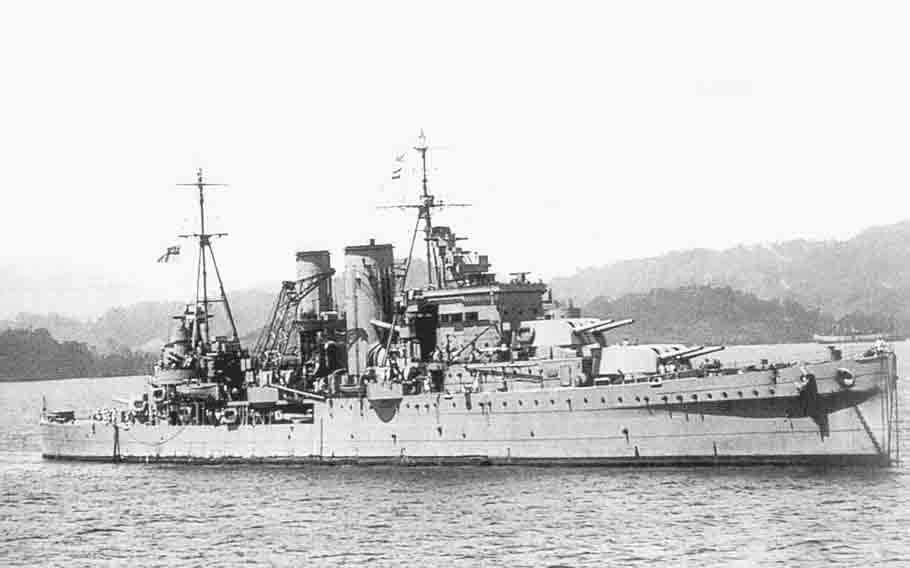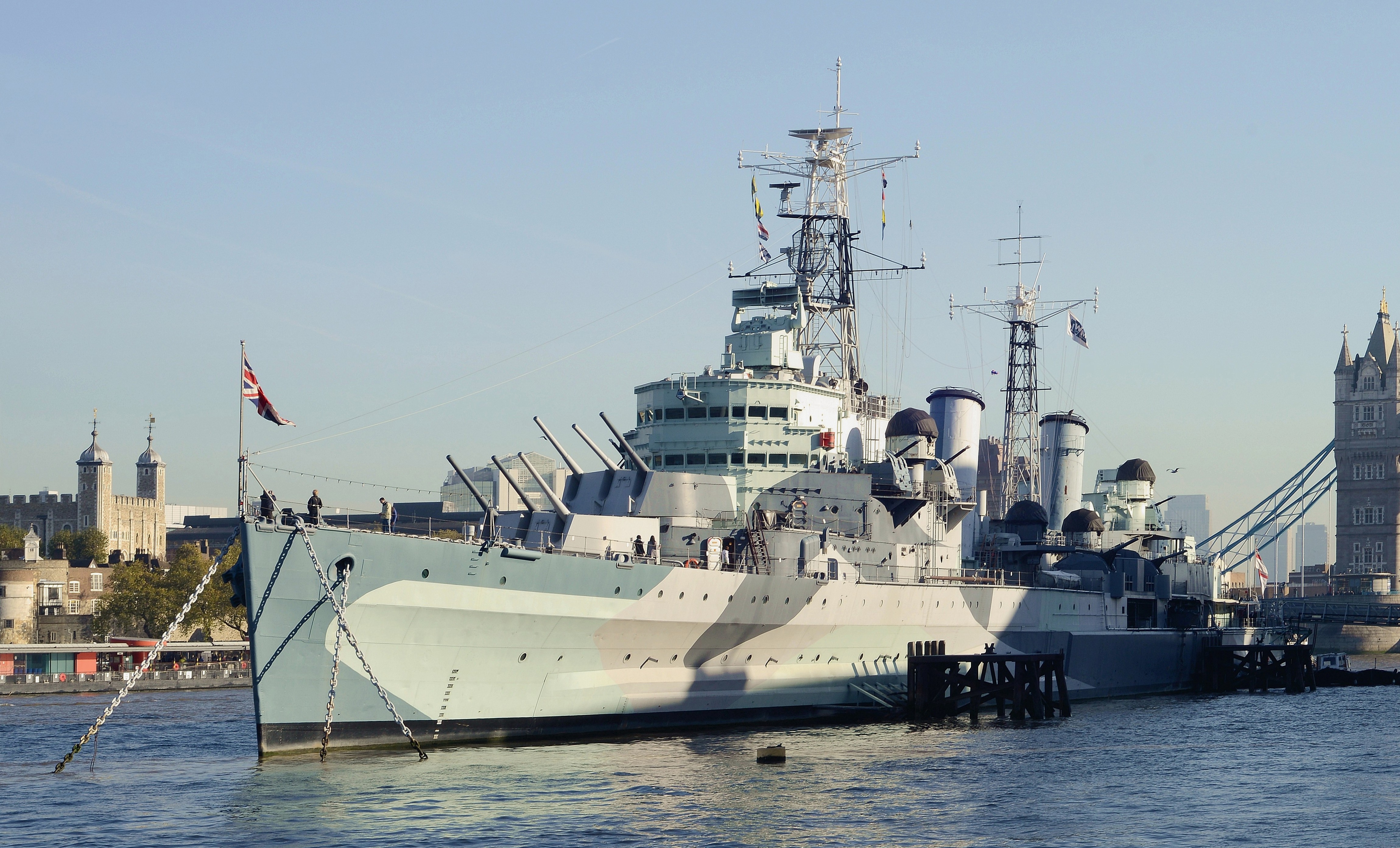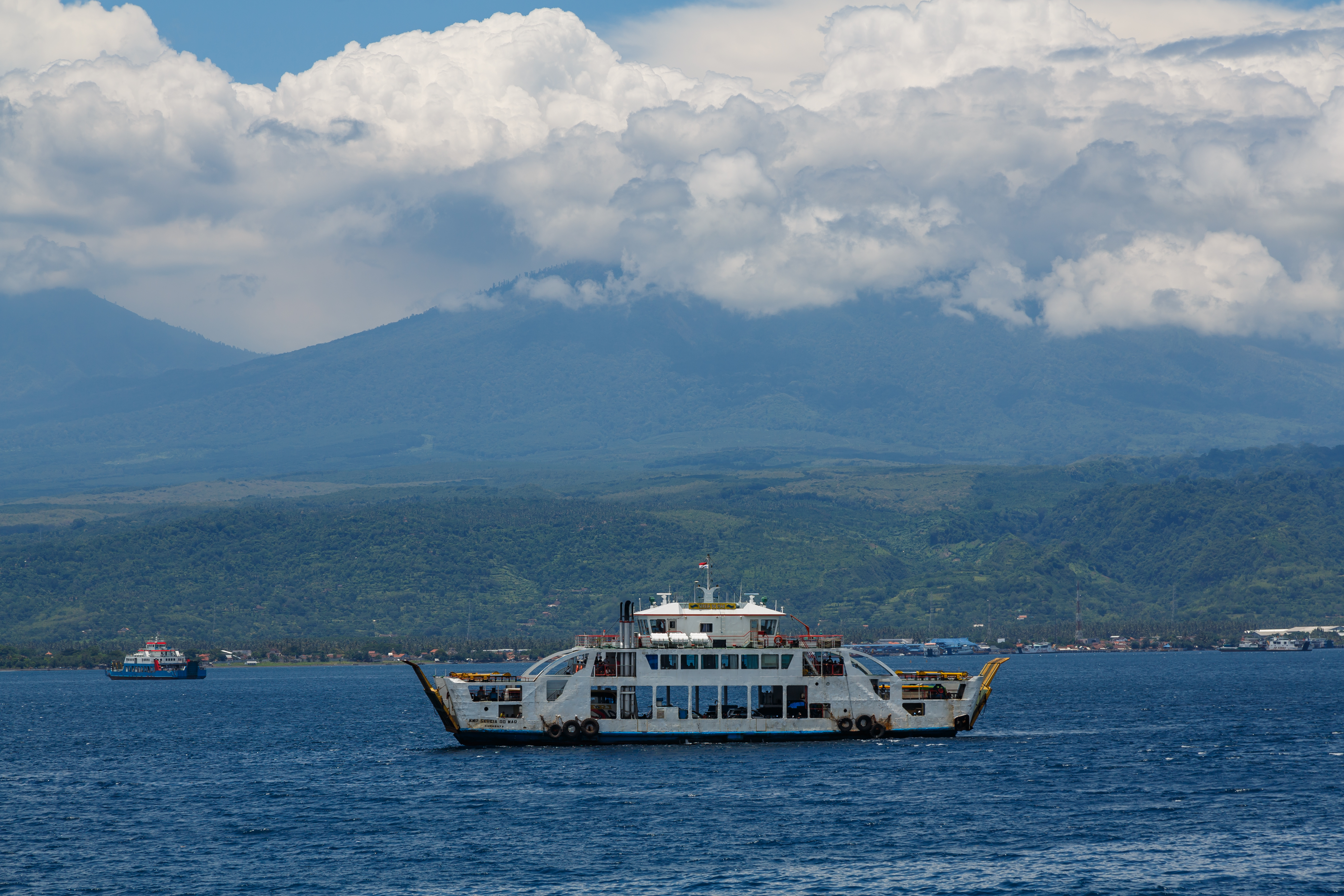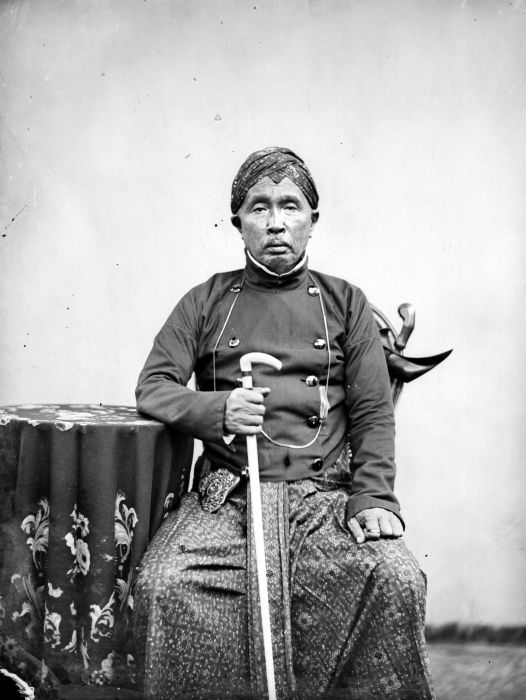|
Second Battle Of The Java Sea
The Second Battle of the Java Sea was the last naval action of the Netherlands East Indies campaign, of 1941–42. It occurred on 1 March 1942, two days after the first Battle of the Java Sea. It saw the end of the last Allied warships operating in the waters around Java, allowing Japanese forces to complete their conquest of the Dutch East Indies unhindered. Background The American-British-Dutch-Australian Command fleet were defeated at the first Battle of the Java Sea, on 27 February 1942, and its ships had been dispersed or sunk by the Japanese. The light cruiser and the heavy cruiser had retreated to Tanjung Priok, the port of the capital, Batavia, in the west of the island. They planned to withdraw via the Sunda Strait to Tjilatjap on the south of the island and departed on the evening of 28 February; but encountering the Japanese Western Invasion Force later that night in Bantam Bay, they were both sunk in the battle of Sunda Strait; in a related but sepa ... [...More Info...] [...Related Items...] OR: [Wikipedia] [Google] [Baidu] |
Pacific War
The Pacific War, sometimes called the Asia–Pacific War, was the Theater (warfare), theater of World War II that was fought in Asia, the Pacific Ocean, the Indian Ocean, and Oceania. It was geographically the largest theater of the war, including the vast Pacific Ocean theatre of World War II, Pacific Ocean theater, the South West Pacific theatre of World War II, South West Pacific theater, the Second Sino-Japanese War, and the Soviet–Japanese War. The Second Sino-Japanese War between the Empire of Japan and the Republic of China (1912–49), Republic of China had been in progress since 7 July 1937, with hostilities dating back as far as 19 September 1931 with the Japanese invasion of Manchuria. However, it is more widely accepted that the Pacific War itself began on 7 December (8 December Japanese time) 1941, when the Japanese simultaneously Japanese invasion of Thailand, invaded Thailand, attacked the British colonies of Malayan Campaign, Malaya, Battle of Singapore, ... [...More Info...] [...Related Items...] OR: [Wikipedia] [Google] [Baidu] |
Light Cruiser
A light cruiser is a type of small or medium-sized warship. The term is a shortening of the phrase "light armored cruiser", describing a small ship that carried armor in the same way as an armored cruiser: a protective belt and deck. Prior to this smaller cruisers had been of the protected cruiser model, possessing armored decks only. While lighter and smaller than other contemporary ships they were still true cruisers, retaining the extended radius of action and self-sufficiency to act independently around the world. Through their history they served in a variety of roles, primarily as convoy escorts and destroyer command ships, but also as scouts and fleet support vessels for battle fleets. Origins and development The first small steam-powered cruisers were built for the British Royal Navy with HMS ''Mercury'' launched in 1878. Such second and third class protected cruisers evolved, gradually becoming faster, better armed and better protected. Germany took a lead in small cru ... [...More Info...] [...Related Items...] OR: [Wikipedia] [Google] [Baidu] |
Sri Lanka
Sri Lanka (, ; si, ශ්රී ලංකා, Śrī Laṅkā, translit-std=ISO (); ta, இலங்கை, Ilaṅkai, translit-std=ISO ()), formerly known as Ceylon and officially the Democratic Socialist Republic of Sri Lanka, is an island country in South Asia. It lies in the Indian Ocean, southwest of the Bay of Bengal, and southeast of the Arabian Sea; it is separated from the Indian subcontinent by the Gulf of Mannar and the Palk Strait. Sri Lanka shares a maritime border with India and Maldives. Sri Jayawardenepura Kotte is its legislative capital, and Colombo is its List of cities in Sri Lanka, largest city and financial centre. Sri Lanka has a population of around 22 million (2020) and is a multinational state, home to diverse cultures, languages, and ethnicities. The Sinhalese people, Sinhalese are the majority of the nation's population. The Tamils, who are a large minority group, have also played an influential role in the island's history. Other long establ ... [...More Info...] [...Related Items...] OR: [Wikipedia] [Google] [Baidu] |
Fremantle, Western Australia
Fremantle () () is a port A port is a maritime facility comprising one or more wharves or loading areas, where ships load and discharge cargo and passengers. Although usually situated on a sea coast or estuary, ports can also be found far inland, such as ... city in Western Australia, located at the mouth of the Swan River (Western Australia), Swan River in the metropolitan area of Perth, the state capital. Fremantle Harbour serves as the port of Perth. The Western Australian English, Western Australian vernacular diminutive for Fremantle is Freo. Prior to British settlement, the indigenous Noongar people inhabited the area for millennia, and knew it by the name of Walyalup ("place of the woylie")."(26/3/2018) Inaugural Woylie Festiv ... [...More Info...] [...Related Items...] OR: [Wikipedia] [Google] [Baidu] |
Bali Strait
Bali Strait is a stretch of water separating Java and Bali while connecting the Indian Ocean and the Bali Sea. At its narrowest it is wide. Geography The Bali Strait is one of the bodies of water surrounding the island of Bali: Lombok Strait to the east, the Badung Strait to the southeast, the Bali Sea to the north, the Indian Ocean to the southwest, and the Bali Strait to the west. Geologically the two islands of Bali and Java were joined until the end of the last ice age when the sea rose and cut the land bridge. They both share part of the tectonic plate called the Sunda shelf. Transportation The Indonesian government has considered a bridge across the strait. The project is obstructed by economic hardships, as well as objections from certain locals in Bali. Currently there is no fixed link to Bali, only a ferry between Ketapang in Java and Gilimanuk, Jembrana Regency, Bali. History On 28 January 1797 during the Bali Strait Incident a French squadron of six frig ... [...More Info...] [...Related Items...] OR: [Wikipedia] [Google] [Baidu] |
Surabaya
Surabaya ( jv, ꦱꦸꦫꦧꦪ or jv, ꦯꦹꦫꦨꦪ; ; ) is the capital city of the Indonesian province of East Java and the second-largest city in Indonesia, after Jakarta. Located on the northeastern border of Java island, on the Madura Strait, it is one of the earliest port cities in Southeast Asia. According to the National Development Planning Agency, Surabaya is one of the four main central cities of Indonesia, alongside Jakarta, Medan, and Makassar. The city has a population of 2.87 million within its city limits at the 2020 census and 9.5 million in the extended Surabaya metropolitan area, making it the second-largest metropolitan area in Indonesia. The city was settled in the 10th century by the Kingdom of Janggala, one of the two Javanese kingdoms that was formed in 1045 when Airlangga abdicated his throne in favor of his two sons. In the late 15th and 16th centuries, Surabaya grew to be a duchy, a major political and military power as well ... [...More Info...] [...Related Items...] OR: [Wikipedia] [Google] [Baidu] |
HNLMS Evertsen (1926)
HNLMS ''Evertsen'' ( nl, Hr.Ms. Evertsen) was a of the Royal Netherlands Navy. She was destroyed by ships of the Imperial Japanese Navy on 1 March 1942, during the Battle of Sunda Strait. Design In the mid-1920s, the Netherlands placed orders for four new destroyers to be deployed to the East Indies. They were built in Dutch shipyards to a design by the British Yarrow Shipbuilders, which was based on the destroyer , which Yarrow had designed and built for the British Royal Navy.Gardiner and Chesneau 1980, p. 390. The ship's main gun armament was four guns built by the Swedish company Bofors, mounted two forward and two aft, with two anti-aircraft guns mounted amidships. Four 12.7 mm machine guns provided close-in anti-aircraft defence. The ship's torpedo armament comprised six torpedo tubes in two triple mounts, while 24 mines could also be carried. To aid search operations, the ship carried a Fokker C.VII-W floatplane on a platform over the aft torpedo tubes, which w ... [...More Info...] [...Related Items...] OR: [Wikipedia] [Google] [Baidu] |
Destroyer
In naval terminology, a destroyer is a fast, manoeuvrable, long-endurance warship intended to escort larger vessels in a fleet, convoy or battle group and defend them against powerful short range attackers. They were originally developed in 1885 by Fernando Villaamil for the Spanish NavySmith, Charles Edgar: ''A short history of naval and marine engineering.'' Babcock & Wilcox, ltd. at the University Press, 1937, page 263 as a defense against torpedo boats, and by the time of the Russo-Japanese War in 1904, these "torpedo boat destroyers" (TBDs) were "large, swift, and powerfully armed torpedo boats designed to destroy other torpedo boats". Although the term "destroyer" had been used interchangeably with "TBD" and "torpedo boat destroyer" by navies since 1892, the term "torpedo boat destroyer" had been generally shortened to simply "destroyer" by nearly all navies by the First World War. Before World War II, destroyers were light vessels with little endurance for unat ... [...More Info...] [...Related Items...] OR: [Wikipedia] [Google] [Baidu] |
Battle Of Sunda Strait
The Battle of Sunda Strait was a naval battle which occurred during World War II in the Sunda Strait between the islands of Java, and Sumatra. On the night of 28 February 1 March 1942, the Australian light cruiser , American heavy cruiser , and Dutch destroyer faced a major Imperial Japanese Navy (IJN) task force. After a fierce battle lasting several hours, all Allied ships were sunk. Five Japanese ships were sunk, three of them by friendly fire. Background In late February 1942, Japanese amphibious forces were preparing to invade Java, in the Dutch East Indies. On 27 February, the main American-British-Dutch-Australian Command (ABDACOM) naval force, under Admiral Karel Doorman–a Dutch officer–steamed northeast from Surabaya to intercept an Imperial Japanese navy invasion fleet. This part of the ABDA force consisted of two heavy cruisers, including under the command of Captain Albert H. Rooks, three light cruisers, including under Captain Hector Waller, and nine ... [...More Info...] [...Related Items...] OR: [Wikipedia] [Google] [Baidu] |
Bantam Bay
Banten Bay also known as Bantam Bay is a bay in Banten province, near the north-west tip of Java, Indonesia. It is part of the Java Sea and has a total water surface of approximately 150 square kilometres and an average depth of seven metres. It includes marine ecosystems such as seagrass fields and coral reefs, and a major international bird sanctuarybr>The coastal zone, including the nearby cities of Serang and the port of Merak, is undergoing rapid industrialisation. The bay has been the site of two major naval battles: *Battle of Bantam, 1601, during the Dutch-Portuguese War *Battle of Sunda Strait, 1942, during World War II World War II or the Second World War, often abbreviated as WWII or WW2, was a world war that lasted from 1939 to 1945. It involved the World War II by country, vast majority of the world's countries—including all of the great power ... References Bays of Indonesia Landforms of Banten Landforms of Java {{Banten-geo-stub ... [...More Info...] [...Related Items...] OR: [Wikipedia] [Google] [Baidu] |
Tjilatjap
Cilacap Regency ( jv, ꦏꦨꦸꦥꦠꦺꦤ꧀ꦕꦶꦭꦕꦥ꧀, also spelt: Chilachap, old spelling: Tjilatjap, Sundanese: ) is a regency () in the southwestern part of Central Java province in Indonesia. Its capital is the town of Cilacap. Cilacap Regency covers an area of 2,252.50 km2 (including the 115-km2 Nusakambangan Island off the south coast), and it had a population of 1,642,107 at the 2010 Census and 1,944,857 at the 2020 Census; the official estimate as at mid 2021 was 1,963,824. The languages used in Cilacap are the Javanese language and Sundanese language, but most people can speak Indonesian. The dialect used is Banyumasan. There are schools of all levels in Cilacap and several higher-learning institutions. There are several academies such as Akademi Maritim Nusantara (National Maritime Academy). A polytechnic, called Politeknik Cilacap, was established in 2008 and offers education in Engineering, Electronics and Informatics. Administrative Districts Cil ... [...More Info...] [...Related Items...] OR: [Wikipedia] [Google] [Baidu] |
Sunda Strait
The Sunda Strait ( id, Selat Sunda) is the strait between the Indonesian islands of Java and Sumatra. It connects the Java Sea with the Indian Ocean. Etymology The strait takes its name from the Sunda Kingdom, which ruled the western portion of Java (an area covering the present day West Java, Jakarta, Banten, and some of western Central Java) from 669 to around 1579."Sunda Islands". Concise Dictionary of World Place-Names. John Everett-Heath. Oxford University Press 2005. Oxford Reference Online. Oxford University Press. The name also alludes to the Sundanese people native to West Java and Banten, as distinct from the Javanese people, who live mostly in Central and East Java. Geography Extending in a roughly southwest/northeast orientation, with a minimum width of at its northeastern end between Cape Tua on Sumatra and Cape Pujat on Java, the strait is part of the Java Sea. It is essentially triangular in shape, with two large bays on its northern side. It is also very b ... [...More Info...] [...Related Items...] OR: [Wikipedia] [Google] [Baidu] |







_and_USS_Houston_(CA-30).jpg)

